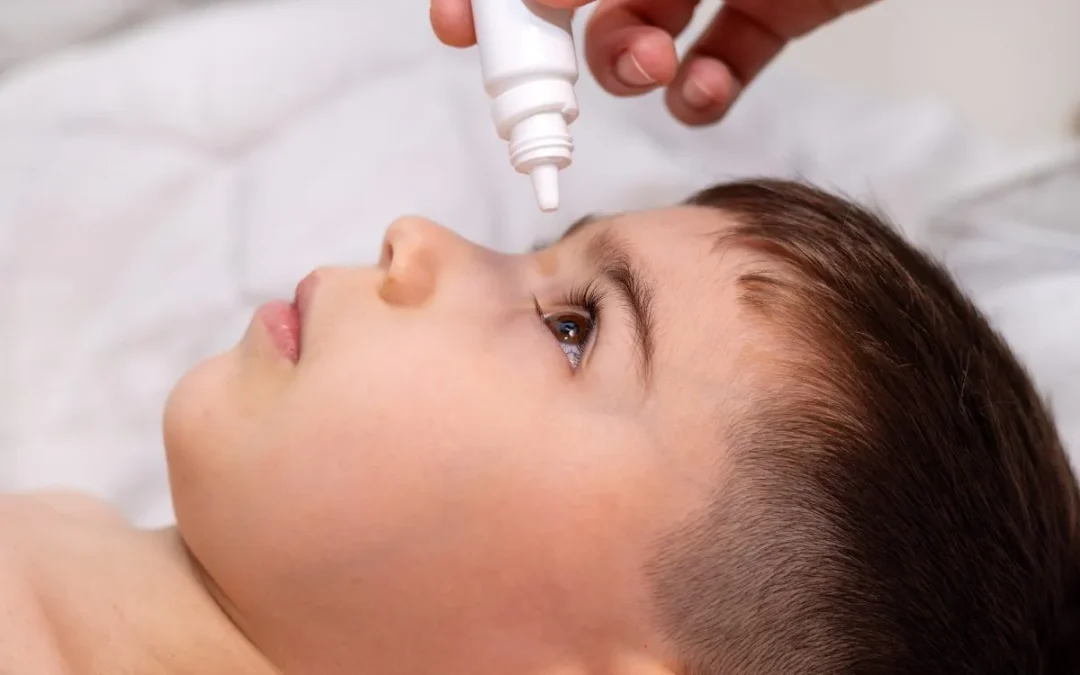
How Long Does Pink Eye Last in Kids?
As spring arrives and the weather warms up, energy levels start to soar, much like the flowers awakening from their winter slumber. Children eagerly venture outdoors to play, except when rain drives them back inside. On those rainy days, parents may seek out indoor play areas like Discovery Place Kids to help their little ones burn off excess energy even if it means increased exposure to germs.
Children are notorious for picking up all kinds of illnesses, especially if they go to daycare, school, or communal play centers where viruses and bacteria that cause most cases of pink eye run rampant.
Common Pink Eye Symptoms
- Watery eyes
- Blurred vision
- Green or white stringy discharge
- Increased sensitivity to light
- Crusting of the eyelids or lashes, especially while sleeping
- Redness and swelling in the white of your eye or inner eyelid
- Thick yellow discharge that crusts over your eyelashes, especially after sleep
- Gritty feeling in one or both eyes
What is Pink Eye?
The medical term for pink eye is “conjunctivitis.” It occurs when the conjunctiva, the clear tissue that lines the inside of the eyelid and makes up the outer coating of the eyeball gets swollen. The job of the conjunctiva is to keep your eyes moist.
Adults and children are equally susceptible to pink eye, and it is incredibly common in the U.S. with over six million cases reported a year resulting in school children missing three million school days as a result. The general rule with pink eye is for one to stay home for 24 hours after beginning antibiotic treatment.
Causes of pink eye include:
- Viruses (very contagious)
- Bacteria (very contagious)
- Allergens, like pollen (not contagious)
- Irritants, like smoke or dust (not contagious)
- Herpes
Viral conjunctivitis is an eye infection caused by a few different viruses and is very contagious. Sometimes large outbreaks occur. It passes on its own given several days.
Bacterial conjunctivitis is an infection due to bacteria. Some bacteria are common, but others that can lead to pink eye include those related to sexually transmitted diseases such as Chlamydia and Gonorrhea. This type can also spread easily in certain settings and children who are not exhibiting fever or behavioral symptoms can usually continue attending school. This type of infection is more common in children than adults and is more prevalent from December through April.
Allergic conjunctivitis is often itchy and results from a body’s reaction to a specific allergen such as pollens, dust, mites, mold, pet dander, or cosmetics. It is most common among those who have other allergic conditions, such as asthma and isn’t contagious. High pollen counts can contribute, but it can occur at any time of the year depending on environmental factors. Allergy medication and allergy eye drops help.
Conjunctivitis caused by irritants has some overlap with allergic conjunctivitis as environmental chemicals or other airborne irritants may precipitate a non-contagious reaction. This type of conjunctivitis may also be caused by a foreign object in the eye, or in cases where contact lenses have not been cleaned properly. Burning eyes can also occur with this form.
Pink eye will resolve within two days to two weeks depending on the cause and treatment.
How to Avoid Pink Eye
Pink eye can be hard to avoid as it passes through close contact with others. You can even get it from shaking hands, which is a big part of our culture. It transmits through touching contaminated surfaces and then touching the face. The regular washing of hands is a critical step in avoiding conjunctivitis. You can help keep it from spreading by keeping your affected child at home when they no longer have a fever or discharge coming from their eyes.
Recommended Hygiene Practices:
- Do not touch or rub the infected eye(s)
- Wash hands often with soap and water, or sanitizer if soap and water are not available
- Wash any discharge from the eyes twice daily using a fresh cotton ball. Throw away the cotton ball and wash your hands with soap and warm water afterward
- Wash hands after applying any eye drops or ointment
- Do not share makeup, contact lenses, towels, or cups
Conjunctivitis in Babies
Conjunctivitis in newborns less than four weeks old (neonatal conjunctivitis) is of special concern and a doctor’s visit should be scheduled immediately. The most common types in newborns are:
Inclusion (chlamydial) conjunctivitis that passes to a baby by a mother with untreated chlamydia during birth. Symptoms typically appear 5-12 days after birth and can pass to the lungs or other parts of the body. Oral antibiotics treat the infection.
Gonococcal conjunctivitis is passed to the baby by a mother with untreated gonorrhea during childbirth. Conjunctivitis typically begins in the baby’s first 2-5 days. Intravenous or intramuscular antibiotics are required to prevent the baby from developing ulcers on the cornea or becoming blind.
Chemical conjunctivitis can result from the antimicrobial drops given to newborns to prevent bacterial infection. Symptoms should abate within 36 hours (or three days).
Some other viruses and bacteria can cause conjunctivitis in newborns such as the ones that can cause genital or oral herpes, which is less common, and even the bacteria that normally lives in a woman’s vagina. Antibiotic ointments or drops treat these cases.
When to Seek Medical Care?
Your child should see their doctor if they have any of the following:
- pain in the eye(s)
- sensitivity to light or blurred vision that does not improve when discharge is wiped from the eye(s)
- intense redness in the eye(s)
- worsening or unimproved symptoms, including pink eye thought to be caused by bacteria which does not improve after 24 hours of antibiotic use
- a weakened immune system, for example from HIV infection, cancer treatment, or other medical conditions or treatments
- a pre-existing eye condition
- decrease in vision
Soothing Pink Eye
The application of cold compresses can help calm the irritation and inflammation that comes with conjunctivitis. New, clean ones should be used each time. Artificial tear eyedrops can also help. Red-reducing eye drops should be avoided as they can increase irritation and may cause other problems. If contact lenses are worn, they should be thoroughly cleaned and set aside until the eyes heal to prevent reinfection.
If your child is experiencing the symptoms of pink eye, bring them to AFC Urgent Care Huntersville for convenient and professional care.


